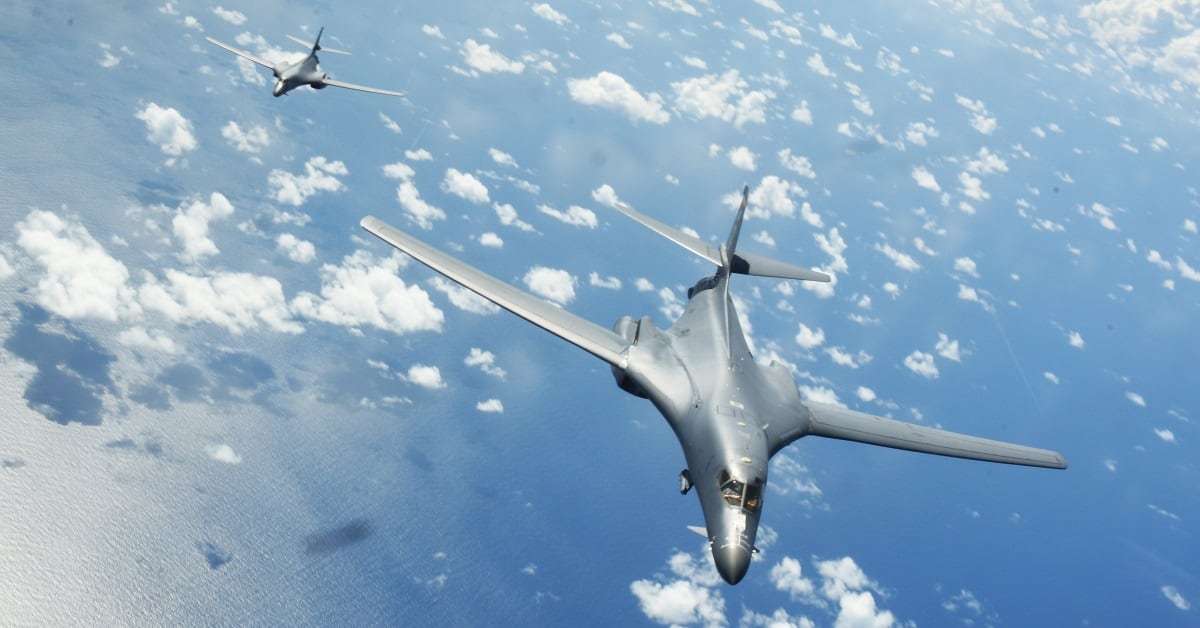This story was updated on June 5 with a statement from Air Force Global Strike Command.
The state of the U.S. Air Force’s B-1B Lancer fleet is bad — really bad — and lawmakers on the House Armed Services seapower and projection forces subcommittee want the service to come up with a plan to fix the problem.
The United States’ long-range strike capabilities “may be placed at increased risk by aging structural problems with the B-1," according to the panel’s markup of HR 2500, the House’s version of the fiscal 2020 defense policy bill, released Monday. The Lancer isn’t getting the resources and attention necessary to improve its mission-capable rates.
The situation has gotten so bad, according to the subcommittee, that the number of B-1 aircraft that are fully mission-capable is now only in the single digits. What’s more, B-1 aircrew are being rerouted from flying the bomber to other aircraft, because there aren’t enough Lancers for their necessary training.
RELATED

The proposed authorization bill would require the Air Force to brief the House Armed Services Committee by March 1, 2020, on its plan to improve B-1 readiness. That plan should address: how the Air Force expects to fix the bomber’s structural issues; its plans to continue analyzing and testing structural deficiency data; repair timelines, and strategies to mitigate these problems in the future.
The subcommittee also wants the Air Force to produce a training plan for pilots and maintainers, and a recovery timeline to meet the B-1′s future deployment requirements. The subcommittee’s requirements must still be approved by the full House and Senate.
In a June 5 statement, Air Force Global Strike Command said that it is currently conducting an extensive engineering review of the Lancer fleet, which will help it determine what workloads and timelines are needed to get back to full capacity.
Global Strike Command also confirmed that the recent stand-down of B-1s, and required maintenance, reduced the number of available bombers to the point where they have not been able to keep all aircrews current.
“In order to preserve the readiness of our aircrews, we are planning to transition certain members to other aircraft and assignments until the B-1B capacity is restored,” Global Strike spokesman Capt. Earon Brown said.
The B-1 fleet has been grounded twice in the past year over concerns with its ejection seats. In late March, Global Strike Command grounded the bombers for nearly a month due to problems with its drogue chute system, which corrects the seat’s angle to allow an airman to safely eject from the bomber.
In May 2018, a B-1B from Dyess Air Force Base in Texas was forced to conduct an emergency landing at a Texas airport when a fire broke out in its wing at the end of a training run. The crew blew the ejection hatch to try to bail out, but an armed but malfunctioning ejection seat refused to eject. The crew stuck together and safely landed the plane together, rather than abandon the airman with the malfunctioning seat. That emergency landing led to a fleet-wide grounding last June.
The Air Force has 62 B-1 bombers. In fiscal 2017, the most recent year for which aircraft readiness data is available, the Air Force said that the Lancer’s mission-capable rate was 52.8 percent, meaning about 32 or 33 bombers were ready to fly at any given time.
Stephen Losey is the air warfare reporter for Defense News. He previously covered leadership and personnel issues at Air Force Times, and the Pentagon, special operations and air warfare at Military.com. He has traveled to the Middle East to cover U.S. Air Force operations.







